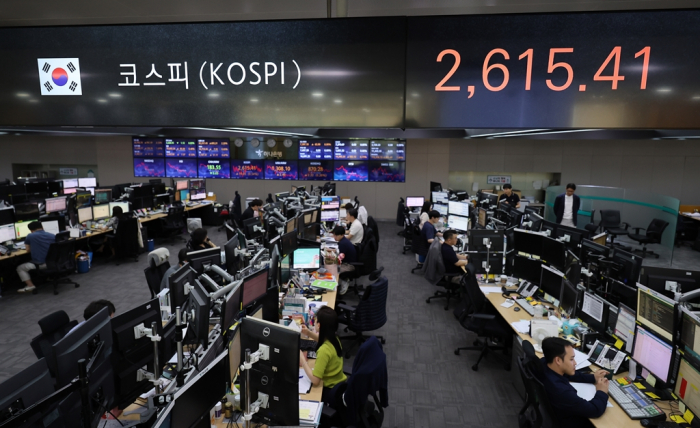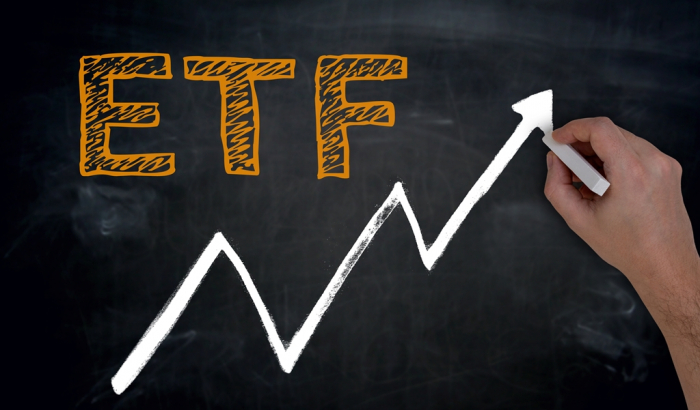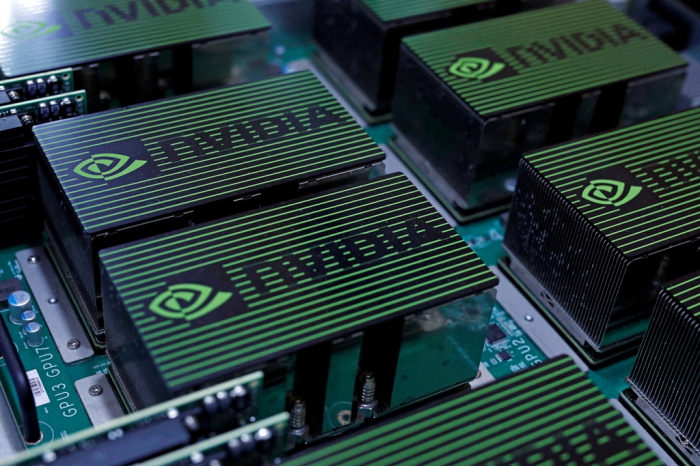Korean stock market
Korean investors’ risky bet: Buy inverse ETFs as Kospi heads higher
Retail investors’ contrarian behavior when market indicators point to a higher Kospi could mean heavy losses
By Jun 05, 2023 (Gmt+09:00)
3
Min read
Most Read
LG Chem to sell water filter business to Glenwood PE for $692 million


KT&G eyes overseas M&A after rejecting activist fund's offer


Kyobo Life poised to buy Japan’s SBI Group-owned savings bank


StockX in merger talks with Naver’s online reseller Kream


Meritz backs half of ex-manager’s $210 mn hedge fund



Among the most cited stock market sayings by experts and laymen alike are “buy the dips” or “sell on news” – time-honored lessons that many investors follow.
Many South Korean retail investors faithfully follow such stock investment tactics but, rather, in a weird way.
An increasing number of analysts, these days, are revising their Korean stock market forecasts upward whereas individual investors are betting on a market decline, snapping up products such as inverse exchange-linked funds (ETFs).
Samsung Securities on Monday issued a research report, forecasting the main bourse’s Kospi benchmark index in a 2,350-2,750 band for the second half, up from its earlier projection for a range of 2,200-2,600.
The brokerage said the Kospi would see a step-by-step increase each quarter, reaching a 2,500-2,850 range by the first quarter of next year.
Samsung Securities was among those Korean brokerages with the gloomiest half-year stock market outlook until last month, citing concerns about the US economic slowdown and lackluster earnings at Korean companies.
But Samsung is now one of the houses with the brightest outlook, citing decent gains in demand for artificial intelligence semiconductors.

NVIDIA LEADS CHIP STOCKS HIGHER
“Nvidia’s first-quarter earnings have brought about optimism throughout the stock market, erasing doubts about local chipmakers’ high valuations,” said Samsung Securities analyst Kim Yong-gu. “Differing views between investors and US monetary policymakers over the Fed’s interest rate trajectory have also narrowed.”
With Korea’s benchmark stock index comfortably hovering around the psychologically important 2,600 points, plus growing market views of a sooner-than-expected chip industry recovery and expectations for an imminent end to the US Fed’s rate hike bias, analysts concur that it’s time again to buy.
On Monday, the Kospi rose 0.54% to close at 2,615.41. On Friday, the index surpassed the 2,600 level for the first time since June 9, 2022.
KB Securities recently said it expects the Kospi to rise to as high as 2,920 during the second half, up from its earlier forecast of 2,800.
“Even if the US service sector falters in the second half, the country’s manufacturing sector will remain resilient, booting the global economy,” said KB analyst Lee Eun-taek.
According to the Korea Exchange, Korea’s main market operator, the Kospi advanced 3.02% in May, the fifth-highest percentage gain among the G-20 countries after Argentina, Japan, Turkey and Brazil.
“The chip sector’s strength will spread to hardware, displays and other industry sectors in the coming months,” said Korea Investment & Securities analyst Kim Dae-joon.

INVERSE ETFs COULD BE RISKY
Korea’s individual investors, however, are bucking the trend.
Korea Exchange data showed retail investors bought 208.2 billion won ($159 million) in the KODEX F-200 Inverse 2X ETF over the past week. The purchasing amount was double their buying of POSCO Holdings Inc. and NCSOFT Corp., respectively.
Individual investors’ purchases of the KODEX F-200 Inverse 2X ETF topped 331.5 billion over the past month.
An inverse ETF is designed to perform as the inverse of whatever index or benchmark it is designed to track. By playing over short investment horizons and performance opposite to their benchmark, inverse ETFs give a result similar to short-selling the stocks in the index.
Because the ETFs’ value rises in a declining market environment, they are popular investments in bear markets.

Unlike the inverse traders’ expectations, the Kospi has steadily headed higher, resulting in a 10.14% loss for the KODEX F-200 Inverse 2X ETF over the past month.
Analysts said the Korean market will continue to be strong, sustained by robust foreign buying of chip stocks such as Samsung Electronics Co. and SK Hynix Inc.
In the past month, retail investors sold 2.46 trillion won in Samsung shares to book profits from recent gains.
“Contrarian investments could be dangerous in a market like this,” said the chief executive of a local ETF management firm.
“Inverse ETFs are a financial product with high risk. If the market uptrend continues, investment losses will snowball. You could lose all in a worst-case scenario.”
Write to Tae-Ung Bae and Man-Su Choi at Btu104@hankyung.com
In-Soo Nam edited this article.
More to Read
-
 Korean stock marketFunds with high exposure to Nvidia, Samsung yield higher returns
Korean stock marketFunds with high exposure to Nvidia, Samsung yield higher returnsMay 31, 2023 (Gmt+09:00)
3 Min read -
 Korean stock marketForeign demand for chip stocks powers Kospi to 1-year high
Korean stock marketForeign demand for chip stocks powers Kospi to 1-year highMay 30, 2023 (Gmt+09:00)
2 Min read -
 Korean stock marketForeigners gobble up chip stocks in S.Korea, buoying overall Kospi
Korean stock marketForeigners gobble up chip stocks in S.Korea, buoying overall KospiMay 19, 2023 (Gmt+09:00)
3 Min read -
 Korean stock marketInvestors ready their return to Korean stock market but with bet on declines
Korean stock marketInvestors ready their return to Korean stock market but with bet on declinesApr 06, 2023 (Gmt+09:00)
2 Min read
Comment 0
LOG IN


